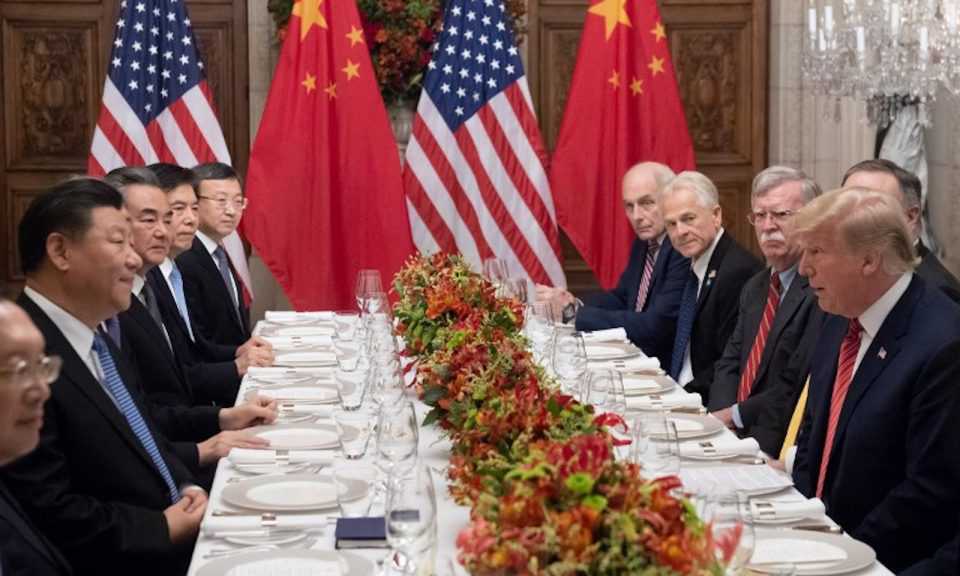Getting to grips with the China syndrome
05 January, 2019

It is all down to the China syndrome. Embroiled in a trade war with Washington and grappling with slowing growth, Beijing is facing a challenging start to the new year.
Already the fallout has descended on international markets and the broader global economy, despite hopes of a breakthrough when talks resume early next week.
Still, numbers released on Friday cast a ray of hope over a raft of disappointing data in the past few months.
Bucking the downward trend, a private service sector survey compiled by Caixin/Markit hit a six-month high in December after slipping to a 13-month low in October.
“Companies registered a solid rate of activity growth, while manufacturing output expanded slightly after two months of stagnation,” Caixin/Markit reported in a statement after the services purchasing managers’ index, or PMI, came in at 53.9 last month compared to 53.8 in November.
Resilience in the sector underpinned the broader composite output index, which takes in manufacturers and service companies. Again, this climbed to a five-month high of 52.2 in December.
A reading above 50 indicates expansion while a figure below that signals contraction.
“Although the index for new export business rose, the one for overall new orders dropped, reflecting weakening domestic demand,” Zhong Zhengsheng, the director of macroeconomic analysis at the CEBM Group, a subsidiary of Caixin Insight Group, said.
‘Negative territory’
“The employment gauge [also] slipped further into negative territory [while] overall business confidence remained relatively subdued in the context of historical data,” Zhong added.
Yet this has been a depressing fourth quarter for the economy despite the trade war truce, which was thrashed out by US President Donald Trump and China’s head of state Xi Jinping at the Group of 20 summit in Buenos Aires in early December.
Manufacturing activity has declined, consumer spending has shrunk and new car sales have stalled. A cooling property market has also been squeezed by tighter credit restrictions.
At the same time, global concerns are growing that more pain could be on the way, although an array of measures to halt the slide will be rolled out by Xi’s government in the months ahead.
“I do believe, the economy in China is decelerating,” Alex Capri, a visiting senior fellow at the National University of Singapore’s Business School, said. “I do believe the numbers are worse than reported in that type of political environment where there’s strong censorship, where media is essentially prevented from reporting.”
Fears that the slowdown will continue, along with uncertainty surrounding the outcome of trade discussions, have played a major part in the turmoil which has engulfed global markets.
On Thursday, the Dow Jones Industrial Average plunged 660.02 points, or 2.8%, to close at 22,686.22, while the Nasdaq dropped 3% to end at 6,463.50.
In Asia, the Nikkei 225 was the big loser on Friday, falling 2.26%. But Shanghai and Shenzhen both bounced back, jumping by more than 2%. Hong Kong’s Hang Seng Index also extended gains in the afternoon session.
“For the brave, now would be a good time to be looking at these markets,” Stefan Hofer, a managing director and chief investment strategist at LGT Bank Asia, told CNBC. “Fundamentally speaking, I think if we do have a trade deal with China, let’s say, by the middle of 2019, then Asia will be the place to be in terms of equities.”
Ceasefire expires
Beijing and Washington have until March 1 to reach an agreement before the ceasefire expires but, of course, that date could be extended.
So far, the White House has imposed duties on Chinese imports worth nearly US$250 billion in tit-for-tat tariffs, increasing the pressure on the world’s second-largest economy.
Apart from rebalancing the trade deficit which stood at a record $375.2 billion in 2017, Trump’s team has demanded a clampdown on intellectual property violations in the high-tech sector and cyber theft.
Other key sticking points are the “Made in China 2025” plan and Beijing’s state-backed economic model.
“I’m optimistic about the outcome,” Wei Jianguo, the former deputy head of the Ministry of Commerce, told Bloomberg, adding that this does not include anything that threatens the country’s “core national interests.”
Others are not so confident.
Mireya Solis, a senior fellow at the Brookings Institution, spelled out the problems ahead on the Washington-based think tank’s website.
“The G20 Trump-Xi meeting yielded a reprieve to the US-China trade war,” she said. “We might as well enjoy it while it lasts, knowing the maelstrom of forces that will make 2019 an epochal year for the future of the trading system.”
And that goes to the very heart of the China syndrome.
TAG(s):
